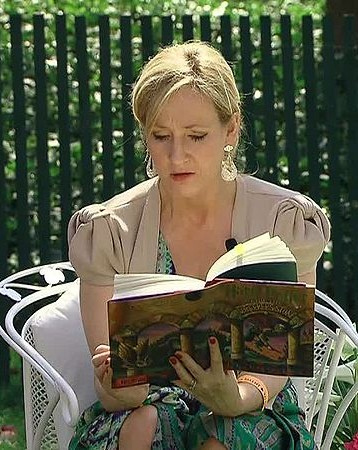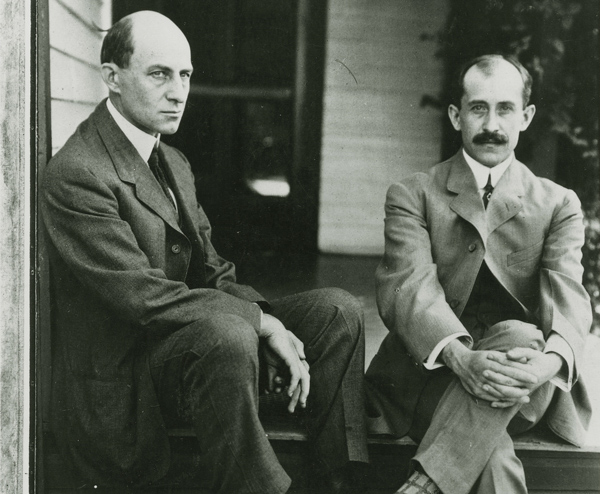From the Archive
This article originally appeared in the Autumn 2012 print edition of Focus on Potential
What does it take to reach your potential? The answer is not money or a high IQ, but actually ‘grit’ or resilience; a positive mental attitude which is characterised by perseverance, self-direction and taking responsibility for one’s own future success. This ‘grit’ has been identified as developing over time through the act of struggling. And this is why struggle can be a good thing.
If you were to ask any parent if they purposefully wished for their child to struggle, the answer is likely to be a categorical ‘no, of course not’. We all want our children’s lives to run as smoothly as possible. However, knowing that they have high learning potential can also increase the pressure we place on ourselves as parents to ensure that this potential is not wasted; that our children have the chance to mostly experience the positives of life and remain relatively unscathed by the negatives. Struggles in life; no matter at what stage, are bound to leave their mark. But what if that ‘mark’ is no bad thing? What if the very act of struggling is in fact a necessity for children with high learning potential, in order to build that much-needed and vital attribute of resiliency? There is a growing consensus amongst parenting experts and psychologists, who are adamant that without a certain degree of struggling, the prospect of reaching one’s potential is unlikely.
In knowing that our children have high learning potential from an early age, it is of course natural to be concerned that we, as parents, do our best to ensure that they have the right opportunities and support to fulfil that potential. We also want our children to be happy and feel safe and secure at all times. If it were possible to eradicate any future discomfort, pain or struggles from the future lives of our children, surely this would be brilliant? Perhaps not, is what a growing number of psychologists, scientists and parenting experts would say. The key to long-term happiness and success is now widely recognised as ‘grit’, or resilience. But how can we, as responsible and caring parents, strike the balance between being so ‘hands-off’ that our children don’t tell us when they need help and swooping in at the first sign of discomfort or frustration?
Unfortunately, there is no simple answer; mainly because every parent and every child will have a different threshold which delineates between mild, necessary struggling and definite, unshakable defeat. This is a lesson learned with time and through observation of your child’s approach to new challenges. In order for this to happen, they need the opportunity to experience a certain amount of floundering; the feeling which can be best be likened to wobbling on a bicycle without stabilisers for the first time or the first swimming lesson without arm bands. Of course they’re nervous; as are you as you watch from the sidelines. But you know that this is a personal victory for your child to experience with your support but without your intervention, to prevent it from happening at all.
Supporting a child without intervening is not as easy as it seems, simply because as we become more and more adept at parenting, the instinct to nurture and protect at all times becomes second nature. When our children were babies, we learnt how to decipher their every gesture, grimace, and smile or cry in order to almost pre-empt their demand for the very basics of survival. Almost overnight, we become less selfish; suddenly, thoughts of their future safety and well-being become more important than our own. The last thing we want to see is our child experiencing frustration, pain, and upset. There is a common saying amongst parents which encapsulates this feeling well; “A parent is only as happy as their least happy child”. So of course our first instinct as a parent is to ‘fix’ the ‘problem’. But is this always what is required and who does it benefit long-term…the parent or the child?
The concept of purposefully stepping back and allowing our children to experience those very raw negative emotions associated with struggling is an alien one to most parents. Why then is it important and sometimes essential to let our children struggle? The Parable of the Butterfly has frequently been quoted to demonstrate the importance of building resilience in children by allowing them to follow their own journey; despite sometimes stumbling and struggling along the way.

The Parable of the Butterfly
Whilst in his garden one day, a man saw a cocoon hanging from a twig. From then on, every day, he checked to see if anything had come out. One day a small opening appeared! The man was delighted and sat down to witness that special moment when a beautiful butterfly finally emerges from its cocoon.
The man watched patiently as the butterfly struggled to force its body out of the little hole. For several hours, the butterfly pushed and scraped against the inside of the cocoon. It worked and worked, and eventually, it stopped making any progress.
The hole in the cocoon was only marginally bigger than when the man had first seen it. The man was sad that the butterfly was not strong enough to fight its way out of the cocoon.
So, the man decided to help the butterfly. He fetched a small pair of scissors and cut off the remaining part of the cocoon. Finally, the butterfly was exposed to daylight for the first time since its metamorphosis.
The butterfly fell out of the broken cocoon and the man eagerly waited for it to spread its beautiful wings and take flight.
However, the butterfly’s body was swollen with fluid and its wings were weak and shrivelled. The man was saddened to witness the butterfly’s pitiful state.
He was unaware that butterflies will cling onto the side of the chrysalis for an hour or so, to allow their wings to dry out and enable them to fly for the first time.
The man continued to watch the butterfly. He expected that, at any moment, its wings would enlarge and expand to be able to support the body of the butterfly. He expected the butterfly to fly at any minute.
Sadly, this didn’t happen. The butterfly spent the rest of its life crawling around with a swollen body and shrivelled wings. It was never able to fly. It was still a beautiful insect and the man imagined that it would have been even more stunning in flight.
What the man did not understand was that the restricting cocoon was providing the butterfly with the struggle it required to become stronger. By spending time picking apart its now unwanted home, the butterfly was becoming stronger; the excess fluid from its body would have eventually spread to its wings; causing them to expand, ready for flight.
In his act of kindness, the man had taken away the butterfly’s ability to become strong enough to face the world outside its cocoon. Sadly now, the butterfly was not as strong as it could have been. If only the man had allowed it to struggle when it needed to…
Sometimes struggles are exactly what our children need in their lives. Our instinct as parents is to help them, to protect them from every possible pit-fall that we may envisage. However, if our children sailed through childhood without any obstacles, they would not have the tools and skills to cope with what lies ahead in adolescence and adulthood. The difference then is that we will not be waiting in the wings to catch them as they fall. They will then need to navigate their own way through new struggles without the comforting safety net of a parent who can make it all go away.
The skills and the lessons learned from experiencing struggles in childhood are what enable our children to ‘fly’ when they are ready and when they need to. A struggling child needs a parent’s empathy and support; but not for them to step in and solve the problem all of the time. The struggle is theirs and so it makes sense that the solution should be their own too. By sometimes stepping back and allowing a child to take ‘ownership’ of their problems, parents will later witness the child approaching a similar or entirely different struggle with a confidence and determination, which was once lacking.
It is important that we remember that we have provided our children with the security they needed from the very start. Knowing this, should help us to find the confidence we need to allow our children to cope with a certain degree of struggle. They need to experience the fact that not everything in life comes easily and that perfection and a state of perpetual success are unattainable.
There are several incredibly successful people who have experienced seemingly insurmountable struggles, but have displayed a huge amount of tenacity, which has helped them to completely change their lives for the better. For these people, the joy of success is further enhanced by the unshakable strength they gained during their struggles in earlier life:

J. K. Rowling: The Harry Potter books are famous world-wide, but J.K Rowling’s personal life is a true tale of from ‘rags to riches’. More than 400 million copies of her books have been sold, but this is something that J.K Rowling never envisaged as a single parent living on benefits and battling with depression. She is now one of the richest and most successful women in the world, but was rejected by countless publishing companies before a small London publisher finally took a chance on her.

Akio Morita – the founder of Sony: Morita’s first product was a rice cooker that unfortunately burnt rice! This initial failure only spurred Morita and his partners to try harder. They eventually created a multi-billion dollar company.

Albert Einstein: For most people, the epitome of ‘genius’ is Einstein. However, Einstein struggled through much of his early life. He was a late talker and could not read until he was seven. His parents and teachers were convinced that he had a learning difficulty and that there was little hope for his future. Einstein carried on learning and developing at his own pace; undeterred by the opinions of those around him. He later won the Nobel Prize for developing the general theory of relativity, causing a revolution in physics.

Mo Farah: He is now famous for being a double Olympic champion and the UK’s greatest ever distance runner. However, this is a far cry from his humble beginnings in Somalia. He moved to London from Mogadishu at the age of 8 and spoke very little English. Farah’s twin brother and mother remained in poverty stricken Somalia. Mo’s positive attitude is summed up well by his personal motto of ‘Go hard or go home’ which is emblazoned across his personal website. This aptly summarises his personal determination to succeed right from the start of his move to the UK from war-torn Somalia.

Orville and Wilbur Wright: The Wright brothers both battled with depression and family illness in earlier life. They later opened a bicycle shop and it was there that they decided to experiment with the idea of taking flight. Several failed attempts and years of hard work finally ended in something which has changed our world completely. The invention of the aeroplane to this day remains one of the most remarkable breakthroughs in history.

Winston Churchill: Prior to winning a Nobel Prize and becoming Prime Minister of the United Kingdom, Winston Churchill had many experiences of struggling. He was a poor student at school and also had a stutter. This did not stop him from giving many inspirational speeches as a politician; commenting that “My impediment is no hindrance”. Despite being defeated in every election for public office, he remained undeterred and was finally elected as Prime Minister at the age of 62.

Walt Disney: Disney was sacked from his first job and was told that he had no imagination! He struggled for a long period of time whilst remaining true to his ambition of setting up his own company. Despite facing bankruptcy, he never gave up. Today, the Walt Disney Company, together with its subsidiaries and affiliates, is a leading diversified international family entertainment and media enterprise with five business segments: media networks, parks and resorts, studio entertainment, consumer products and interactive media. The company is worth billions.

Oprah Winfrey: According to some statistics, Oprah is the most influential woman in the world today. Her multi-award winning talk show was the highest-rated programme of its kind in history. Oprah is ranked as the richest African-American of the 20th century. However, Oprah’s journey was far from easy; she was abused as a child and grew up in poverty. Her dreams of working in television were nearly quashed early in her career when she was told that she was “unfit for TV”. Despite this, Oprah’s positive attitude remains constant:
“I don’t think of myself as a poor deprived ghetto girl who made good. I think of myself as somebody who from an early age knew I was responsible for myself, and I had to make good.” Oprah Winfrey
By allowing our children to struggle with real challenges, we are in effect, leaving them vulnerable to experiencing failure. This idea is abhorrent to most children and many parents. However, the lives of the remarkable people listed above, indicate that sometimes the path to success or eminence is littered with struggles and obstacles.
Recent research from the University of Buffalo also came to the same conclusion. They found that adults who had not experienced many struggles in early life were in fact less happy with their current lives compared with adults who had dealt with some degree of struggling. It was the act of pushing past their problems which taught the second group how to cope with future challenges and, more importantly, how to ask for help when they needed it. They gained a new-found confidence in knowing that they were able to overcome something which they once found difficult to cope with. This resulted in their current state of personal happiness; knowing that no matter what happens in later life, they will not only survive, but thrive.
Parenting by ‘fixing’ the problems our children face denies them the chance to experience what they require to build resilience/grit; that vital ingredient for coping with what life throws at them in the future. Unfortunately, this can lead to problems in adolescence and adulthood when they have to face challenges and struggles on their own – without knowing how to overcome them. By wanting to protect them, we are in fact doing the opposite as we are leaving them vulnerable and unable to cope when it is most needed.
Potential Plus UK urges parents to always support their children, but we also recognise that we must do our best to provide children with the challenges they need to encounter failure within a safe environment. As a society, we are taught from early on to avoid struggling and to fear failure. Paradoxically, this may be the very thing we need to start incorporating into our family lives so that our children can witness first hand that failing early on can help them succeed in later life.
This article was written by former Potential Plus UK Education Consultant, Radhika Rajbans






